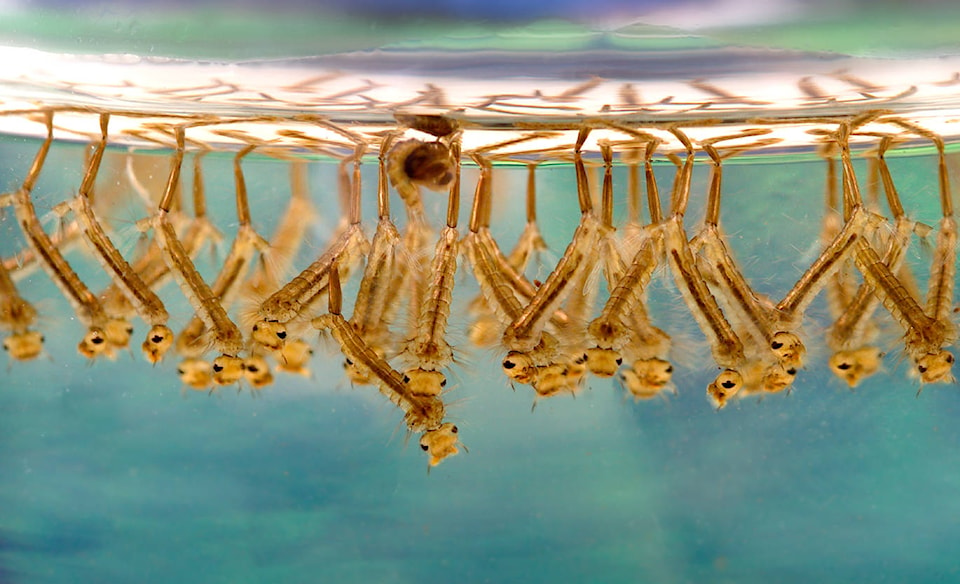Twice as much mosquito control has been done this year than usual in the Revelstoke area, and more is being contemplated.
“So far we’ve done a record in the years that I can see,” said Cheryl Phippen of BWP Consulting, the contractor in charge of mosquito control. “We’ve done twice as much as has ever been treated before because of this really long, slow rise of the Columbia River.”
The Columbia Shuswap Regional District, which runs the mosquito control program, has spent $87,000 on treatments so far — almost double what was budgeted. By helicopter and by foot, contractors sprayed larvicide on 1,193 hectares. For comparison, they sprayed only 401 hectares last year, and in 2012, another very wet year, they sprayed 517.74 hectares.
This all comes at a cost.
Ben Van Nostrand, the CSRD’s head of environmental services, told the Review that $45,000 is budgeted for mosquito control in Revelstoke and Area B, and another $10,000 is available for additional treatments. They also used up a $22,000 reserve and $10,000 that was scheduled to be spent in 2018.
And just to be safe, they received permission from the CSRD’s Board of Director’s to spend another $25,000 this year, if necessary.
“If the weather took a drastic change and we started to get a whole bunch of rain over the next many weeks, there could need to be a treatment in August because of public complaints and more larvae in the area we cover,” Van Nostrand said.
This extra funding has tax implications for residents of Revelstoke and Area B. In a report to the board of directors, Van Nostrand says that if the extra $25,000 is spent this year, taxes would have to go up by $4.12 to pay back the deficit in 2018. Replenishing the $22,000 reserve would cost the average taxpayer $6.80 in 2018.
The good news is that the mosquitoes appear to be subsiding, said Phippen. When they go look for larvae, they’re only finding a few in each sample, as opposed to hundreds.
“It looks like we’re past the peak at this point,” she said.
What could make it worse is if the river levels rise above their previous peak. That would wet more larvae and cause mosquitoes to hatch, Phippen explained.
BC Hydro spokesperson Jen Walker-Larsen said this isn’t likely. The water level in the Arrow Lakes peaked at 439.5 metres elevation on July 17 and is expected to stay stable for the rest of the month.
Water levels in the Arrow Lakes can go as high as as 440.1 metres, meaning there is a possibility more land is flooded and more larvae hatch.
“We have been unusually dry lately and if this weather pattern continues then Arrow Lakes Reservoir water levels will mostly likely drop,” wrote Walker-Larsen in an e-mail. “Conversely, if we start having above-average wet weather, the water level will likely go up again.”
Fortunately, the hot, dry weather means mosquitoes that do hatch die quickly — unlike last year when consistent rain all summer meant mosquitoes thrived.
“We’ve had fantastic adult-killing weather since just before the long weekend in July,” said Phippen.
